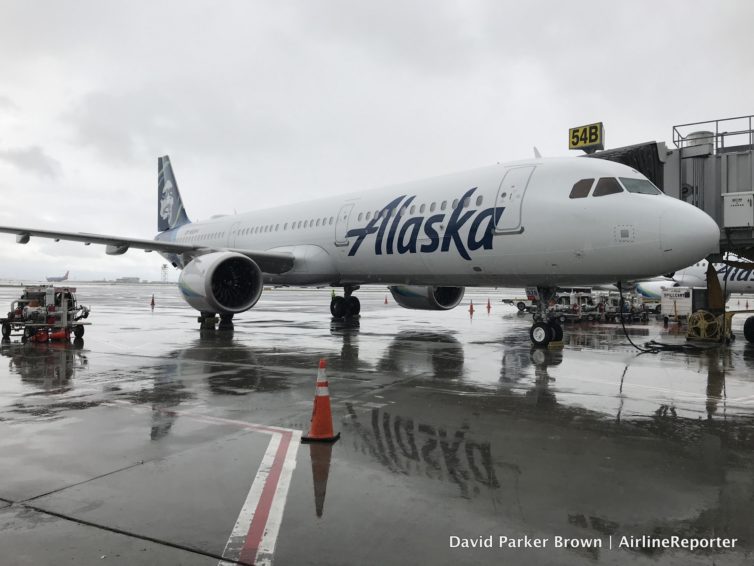
Hello beautiful! My Alaska Airlines VIP Airbus A321neo. Yes, it is weird typing “Alaska Airlines” and “Airbus” together.
Change is inevitable — especially in the airline business. Change can be all fine and dandy when you are talking about it conceptually, but when the time comes, it is not always easy. As you probably know by now, Alaska Airlines and Virgin America merged, and the red/white Virgin livery is quickly being retired. Virgin was known to be a bit risky in their branding and marketing…. and Alaska played it a bit more safe. Although Alaska will be sending the Virgin America brand into the history books, it has been important for Alaska to incorporate some of the Virgin culture into the new merged airline. Not just for the customers who loved the Virgin product, but also for the employees who are in the process of getting to know their new family.

Ironically, the Alaska 737 with the ‘More to Love’ livery celebrating their merger with Virgin was parked next to our A321 at SFO – Photo: Jeremy Dwyer-Lindgren | JDLMultimedia
I was recently invited to fly down to San Francisco (SFO) to get a first hand look of the new Alaska Airlines product that will soon be found across the fleet. At gate 54B, the airline had set up walls, and inside were a variety of new products to be experienced. Also, there were experts to answer your questions about what was new. There was a special treat, too. What better way to put it all together than to take a special VIP flight on one of their Airbus A321s (that previously flew for Virgin America, obviously)?
I was interested to see the balance Alaska decided on, and get a better idea of my hometown airline’s future.
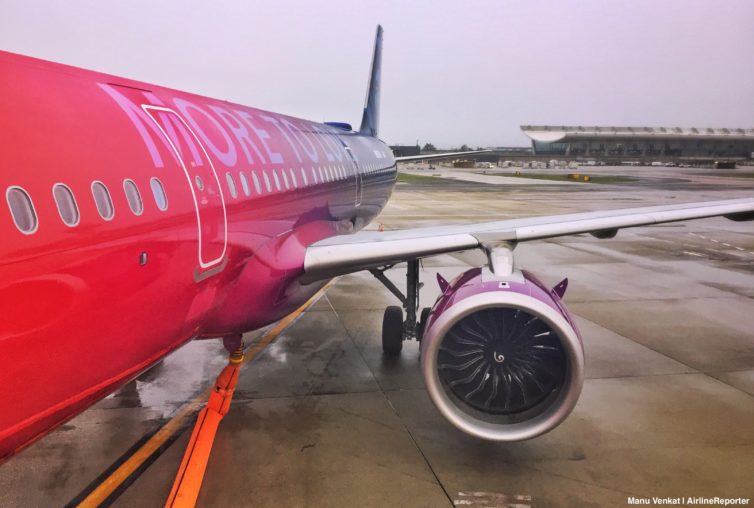
Beautiful intake fan blades on the Airbus A321neo
Recently, America lost an airline. Well, sort of. The happy Eskimo on Alaska Airlines’ tail got hungry and decided to gobble up Virgin America, the relatively small but much beloved Bay Area-based carrier. As Alaska adopted the fleet and people of Redwood (Virgin America’s old callsign), it started repainting Virgin planes and making plans to replace aircraft interiors with a consistent Alaska product.
But at least for now, remnants of Virgin America’s unique style can still be found … if you know where to look. Try Alaska’s new A321neos, originally ordered by Virgin America. We experienced one firsthand on a transcon flight from Washington Dulles to San Francisco, and were delighted by the spacious seats, cabin comfort, and the very purple Virgin sense of style.
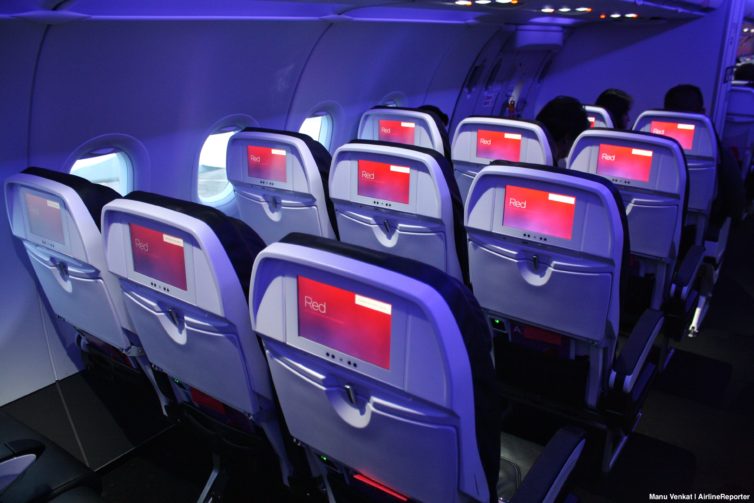
Read on for more photos and videos from this new-yet-nostalgic ride.
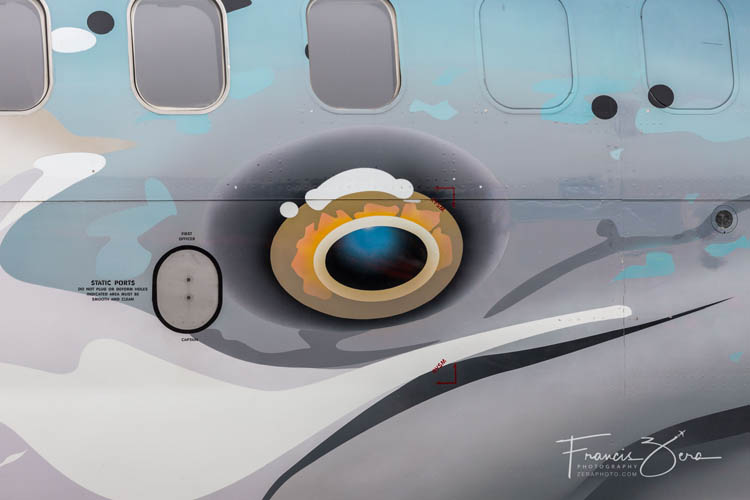
This year was the ninth annual Alaska Airlines Copper River Salmon cook off. What’s that? It is the first time of the season that the very tasty Copper River salmon is flown down from the crisp waters off of Cordova, AK to Seattle. Then, multiple chefs from the region cook up their favorite dishes and the audience of VIPs and MVPs vote their favorite. Even though this event requires me to get up earlier than I would prefer, I look forward to it and it is always worth it. Not only do I get to try some yummy fish, but there are always some good times with planes to be had!
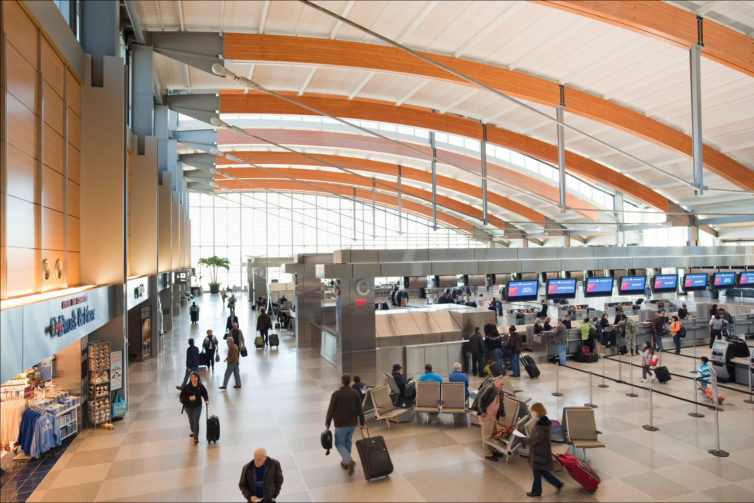
RDU’s stunning Terminal 2 ticketing area – Photo: RDU Airport Authority
Two cities on either side of the country have become the epicenter of a battle royale that would make wrestling promoter Vince McMahon proud. Put on your best ring announcing voice and proclaim this the ’œBattle of SEA and RDU!’ (rolls off the tongue better than “Seattle-Tacoma International Airport versus Raleigh’“Durham International Airport)
Through a TV news and PR career, I’ve lived in some cities I would have never imagined, including six years in Raleigh, NC (2001 to 2007). Back then, American Airlines dominated with regional jet service to smaller cities and big planes to major hubs of Chicago, Dallas, Miami, and New York.
Delta mainly flew to Atlanta and Cincinnati. You also had the option of Northwest Airlines to its hub cities of Memphis, Minneapolis, and Detroit. One city not on the list back then was Seattle. I flew out to the Emerald City in 2005 to see my Minnesota Twins in the baseball opener via a connection in Minneapolis on Northwest.
What a difference a decade makes. Thanks to increased competition and more nonstop flights to cities that were once ignored by the airlines, the consumer has more choices than ever as Seattle and Raleigh, NC have two nonstop flights that started within the past two years. RDU also has a stunning updated terminal that makes Sea-Tac’s 1970’s airport look even worse than its brown facade and cramped restrooms seem.
Alaska was first with nonstop Seattle to Charleston, SC and Raleigh, NC flights. It was a roll of the dice for Alaska, who does not have much brand recognition east of the Mississippi. The Charleston flight was literally a gift to Boeing, since so many of its employees shuttle between the two cities (due to their 787 factory there). Raleigh has a big tech and pharmaceutical community, so the airlines are banking on that business.
Alaska says the risk is worth the reward.
“We are all about providing nonstop access to destinations like Charleston and Raleigh making travel convenient and efficient for our guests,” Alaska spokesperson Ann Johnson tells AirlineReporter. “Since we started service in Charleston and RDU, we have increased it based on the demand. We have increased the number of days of week that we operate the Charleston service. At RDU we launched a second destination to SFO last year. Alaska offers the most nonstop service out of Seattle to top destinations.”
Delta did not respond for comment on this story.
I had a personal flight recently on Delta (I paid for and did not receive any perks for doing this story) and thought why not break down the service.
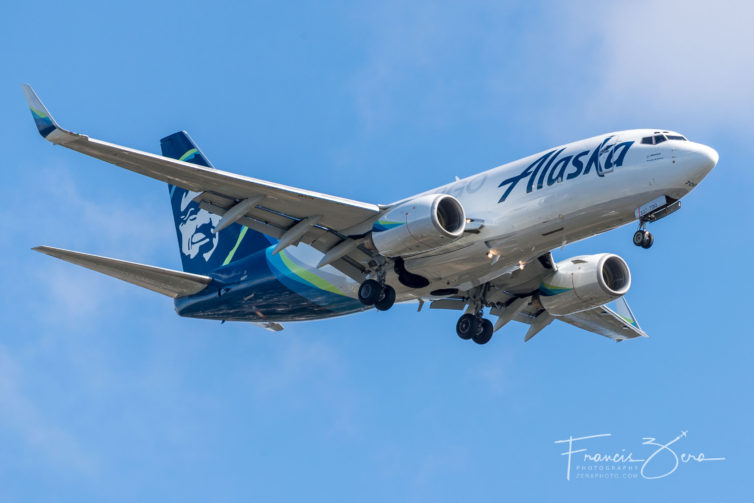
Alaska Airlines’ newly-converted 737-700 freighter on a recent flight from Anchorage to Seattle
Alaska Airlines recently added a new type of aircraft to its fleet: an all-cargo Boeing 737-700, converted from one of their passenger jets.
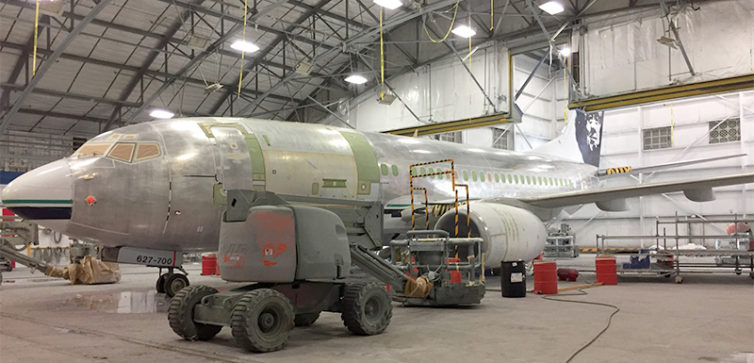
Alaska’s first completed 737-700 freighter being prepped for paint in Victorville, Calif – Photo: Mike Hogan (manager, Alaska Airlines vendor maintenance)
The conversion was completed in Tel Aviv by Israel Aerospace Industries. The plane was ferried to Israel in 2016, and the conversion process took a total of 19 months. Now that the necessary protocols and systems have been developed, subsequent conversions will be completed at a faster rate.







